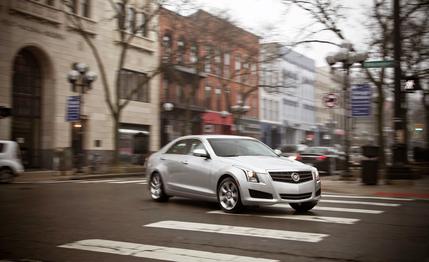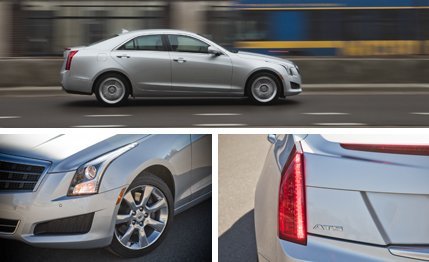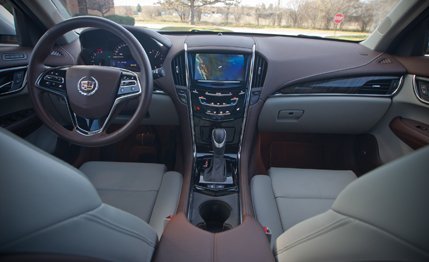
 Instrumented Test
Instrumented Test


Is it heresy that the starter version of Cadillac’s excellent 3-series fighter is powered by the Chevy Malibu’s 2.5-liter inline-four? Or is a high-volume schlepper a necessary and reasonable condition of Caddy making an ATS-V for us enthusiasts? Depends on whom you ask. What’s clear is that the ATS is priced to move: At $33,990, the 2.5 is $1805 cheaper than the one-level-up 2.0-liter turbo ATS, and it undercuts competitive rear-drive base models, including the BMW 328i and the Mercedes-Benz C250, by at least $2400.
Surprisingly, the 2.5’s 202 horsepower isn’t a drag under most circumstances. The ATS merges onto the freeway with all the gusto of, well, a Malibu, and comfortably keeps pace with 80-mph traffic without the need to rifle through the transmission for revs. When every last horse must be harnessed, however, the engine sounds a bit like a two-cycle leaf blower warming up. And, though there’s decent power lower down, there’s no punch at the top end.


The six-speed automatic is shared with the other ATS models, but in this application the overall ratios are shorter due to the 3.45:1 differential (versus a 3.27:1 in the ATS’s 2.0T and 3.6-liter V-6 versions), which aids acceleration slightly. At 3366 pounds, this ATS makes good on Cadillac’s promise that the base ATS would weigh less than 3400. When compared with the 111-pound-heavier ATS 2.0T, the 2.5’s 7.4-second 0-to-60-mph time is 1.1 seconds slower, though the gap narrows a bit at the quarter-mile.
Squatting on Michelin all-seasons and fixed-rate dampers, the ATS 2.5 recorded roadholding (0.88 g) and braking results (161 feet) nearly identical to that of an ATS equipped with summer tires and dynamic dampers, a testament to the fundamental competence of the chassis. As with the ATS 2.0T that recently fell to the BMW 328i in our November 2012 comparison test, this lesser version’s balance of ride and handling is fantastic. It is firm and planted, with the body control of a yogi. Compliant enough to keep passengers comfortable on a brick-paved lane, it’s still reassuring when approaching its handling limits.
Unfortunately, the sportier seats, which come standard in the Performance and Premium packages and include adjustable thigh support, aren’t available on the 2.5. The standard seats are rather flat, hard, and wide. They won’t cause numbness during an hour-long commute, but a chassis this good requires better bottom holders.


Cadillac’s CUE in-frustr-ainment system doesn’t have much to recommend it. An example: When the backup camera is in use, the volume control on the console won’t work. And the capacitive-switch array on the center stack doesn’t always seem to respond with haptic feedback, as it should. It isn’t hard to inadvertently set the climate control to max heat when all you want is another couple of degrees. Let’s just say we’re looking forward to CUE 2.0.
If it weren’t for an engine that’s a couple dozen horses short and a bit too coarse, the base ATS would be award-worthy. This car has an exemplary chassis that begs to be caned. It’s a pity the same can’t be said for the base engine.